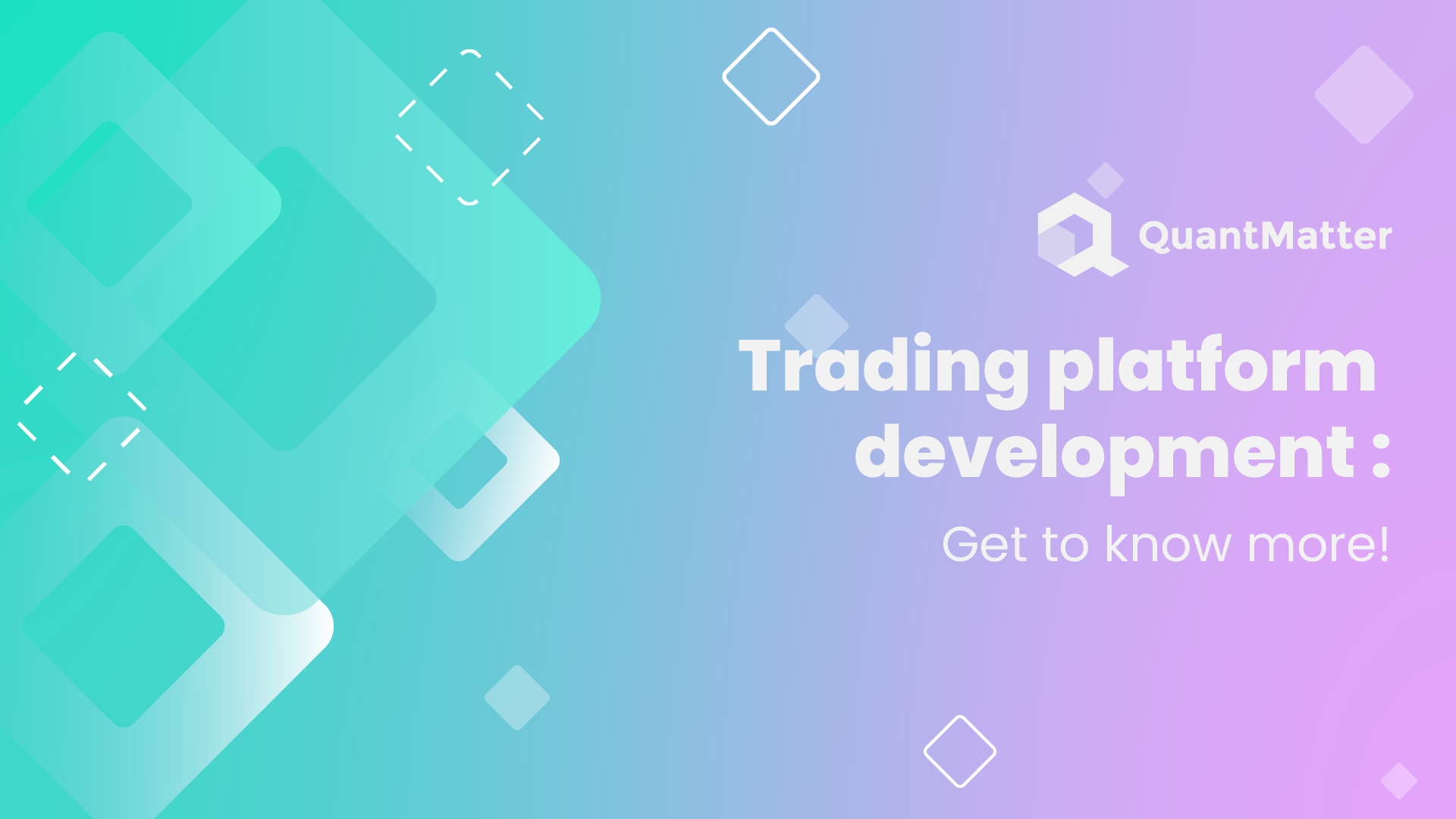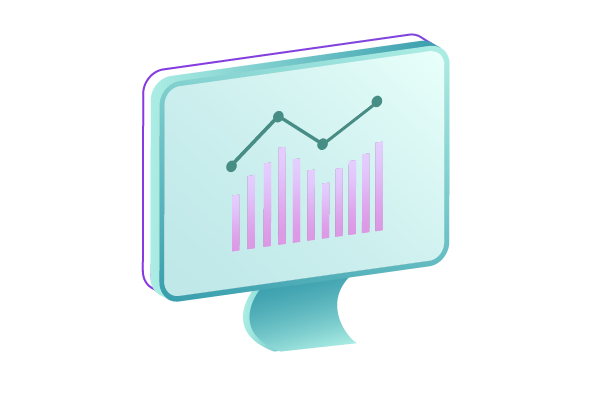
Trading platforms have become the backbone of modern trading. These sophisticated software solutions facilitate the buying and selling of financial instruments, providing traders with the tools and resources needed to make informed decisions. Behind every successful trading platform is a team of dedicated developers, engineers, and financial experts who work tirelessly to create a seamless and secure trading experience.
Trading platforms are the result of a harmonious blend of cutting-edge technology and the expertise of skilled professionals. They represent the bridge between traders and the complex world of financial markets, offering accessibility, convenience, and security in a single package. As we delve further into the intricacies of trading platform development in this article, we will explore more of what drives this dynamic ecosystem.
Trading Platform Development and Innovation

Trading platform development is a dynamic and ever-evolving field that adapts to the changing needs of traders and the technological innovations that shape the financial landscape. Inside this development are skilled developers who drive innovation forward. Several notable trends are currently shaping the landscape of trading platform development:
1. Mobile Trading
Smartphone Revolution:
The advent of smartphones has brought about a seismic shift in how traders interact with financial markets. Mobile trading, driven by the convenience and ubiquity of smartphones, has witnessed a remarkable surge in popularity.
User-Friendly Apps:
Developers have responded to this shift by placing significant emphasis on crafting user-friendly and responsive mobile applications. These applications are designed to offer traders an intuitive and efficient means of accessing trading platforms and real-time market data.
Flexibility and Accessibility:
Mobile trading applications have redefined flexibility and accessibility in trading. Traders can now execute orders, analyze market trends, and manage their investment portfolios from virtually anywhere, be it in the office, at home, or while on the move. This level of flexibility aligns seamlessly with the modern lifestyle and caters to the needs of traders who demand instant access to financial markets.
2. Algorithmic Trading and AI
Automation through AI:
The integration of machine learning and artificial intelligence (AI) has ushered in a new era of trading platform development. These technologies empower the creation of highly sophisticated trading algorithms capable of rapid analysis of vast datasets.
Precision and Speed:
Algorithmic trading and AI bring precision and speed to the forefront of trading strategies. These algorithms can automatically respond to market conditions, execute trades, and manage positions with exceptional accuracy. This level of automation is particularly advantageous for high-frequency traders who seek to capitalize on even the smallest price differentials within fractions of a second.
Reduced Human Intervention:
The automation facilitated by AI and algorithmic trading minimizes the need for constant human oversight, allowing traders to implement strategies that respond swiftly to dynamic market conditions. This not only enhances efficiency but also reduces the potential for human error.
Also Read: All About Algorithmic Trading That You Should Know!
3. Blockchain and Cryptocurrency
Enhanced Transparency and Security:
Blockchain technology is gaining ground within trading platforms due to its inherent features of transparency and security. The decentralized ledger ensures a tamper-proof record of all transactions, enhancing trust and reducing the risk of fraud.
Versatile Applications:
Trading platform developers are actively exploring various applications of blockchain technology. These include streamlining settlement processes, verifying ownership of assets, and even enabling peer-to-peer trading without the need for intermediaries.
Specialized Cryptocurrency Exchanges:
The surge in popularity of cryptocurrencies has led to the emergence of specialized cryptocurrency exchanges and trading platforms. These platforms cater exclusively to digital asset traders, offering a secure environment to buy, sell, and trade a diverse range of cryptocurrencies. With the cryptocurrency market operating 24/7, traders have uninterrupted access to trading and investment opportunities.
4. Social Trading
Community and Collaboration:
Social trading platforms have emerged as a significant trend in trading platform development, fostering a sense of community and collaboration among traders. These platforms facilitate connections between traders, enabling them to engage in discussions about market trends, share insights, and interact with experienced traders.
Following and Replicating Trades:
A pivotal feature of social trading is the ability for users to follow and replicate the trading strategies of more experienced traders. This approach accelerates the learning curve for novice traders and democratizes access to trading knowledge.
Inclusivity:
Social trading platforms underscore the importance of inclusivity within the trading ecosystem. They provide less experienced traders with the opportunity to learn from and potentially profit alongside more skilled counterparts, creating a supportive and informative trading community.
These trends collectively demonstrate the adaptability and innovation within trading platform development, driven by the changing needs of traders and advancements in technology. They reflect the industry’s commitment to leveraging these trends to provide traders with innovative tools and opportunities for success in the financial landscape.
6 Key Components of Trading Platform Development

Key components collectively contribute to the robustness and reliability of trading platform development, enabling traders to navigate financial markets efficiently and securely while adhering to the necessary legal and regulatory standards. Key Components of Trading Platform Development encompass a range of critical elements that collectively form the foundation of successful trading platform development:
1. User Interface (UI) and User Experience (UX)
User Interface (UI) and User Experience (UX) design are pivotal aspects of trading platform development. A user-friendly and intuitive UI/UX is essential to ensure that traders can seamlessly navigate the platform, access critical market data, execute orders, and analyze charts. Responsive design ensures that the platform adapts to various screen sizes and devices, providing a consistent experience.
Real-time data updates keep traders informed of market movements without delays, while customizable dashboards enable users to tailor their workspace to their preferences. In essence, an effective UI/UX design enhances the platform’s usability, making it easier for traders to make informed decisions and execute trades efficiently.
2. Market Data Integration
To provide traders with up-to-the-minute market information, trading platform development must seamlessly integrate data from diverse sources, including stock prices, forex rates, commodity prices, and more. Application Programming Interfaces (APIs) play a pivotal role in this process, allowing platforms to fetch, process, and present real-time data to traders. Reliable market data integration is crucial for traders to make informed decisions and execute orders based on the latest market conditions.
3. Order Execution Engine
The order execution engine is the core component responsible for the swift and accurate processing of buy and sell orders. It plays a critical role in ensuring that traders can execute their orders promptly and at the best available prices.
This component is especially crucial for high-frequency trading platforms, where low latency is imperative. The order execution engine’s efficiency directly impacts the trader’s ability to capitalize on market opportunities and minimize slippage.
4. Risk Management
Effective risk management is fundamental for traders to mitigate potential losses and safeguard their investments. Trading platform development must provide robust risk management tools that empower traders to set stop-loss orders, manage margin requirements, and control their exposure to market risks.
Risk assessment algorithms analyze the trader’s portfolio and market conditions to determine potential vulnerabilities. Features like portfolio margining allow traders to optimize their capital allocation, ensuring prudent risk management strategies.
5. Security
Security is paramount in trading platform development, as they handle sensitive financial information and transactions. Robust security measures are necessary to protect user data and funds from potential threats and breaches. Advanced encryption techniques ensure that sensitive information remains confidential during transmission and storage.
Multi-factor authentication adds an additional layer of protection, mitigating unauthorized access. Routine security audits and vulnerability assessments help identify and address potential weaknesses in the platform’s security infrastructure, ensuring a high level of protection for both traders and their assets.
6. Regulatory Compliance
The financial industry is subject to stringent regulations, and trading platform development must adhere to industry-specific rules and regulations. Developers are tasked with integrating compliance features such as Know Your Customer (KYC) and Anti-Money Laundering (AML) checks to ensure that the platform operates within legal and regulatory frameworks.
These compliance measures are essential to preventing fraud, money laundering, and other illicit activities, safeguarding the integrity of the financial ecosystem, and ensuring the platform’s adherence to relevant legal requirements.
Challenges in Trading Platform Development

Challenges in Trading Platform Development encompass a range of complex hurdles that developers must navigate to ensure the efficiency and reliability of these platforms. These challenges include:
1. Low Latency
Low latency is a paramount challenge in trading platform development, especially for high-frequency trading (HFT). In HFT, split-second decisions can determine the success or failure of a trade. Traders rely on real-time data and rapid execution to capitalize on market opportunities. Achieving ultra-low latency involves optimizing multiple facets of the platform, including the codebase, network infrastructure, and hardware.
Developers often employ specialized techniques to minimize latency, such as reducing data transmission times, prioritizing critical processes, and utilizing high-speed data centers. Continuous performance monitoring and optimization are essential, with strategies like advanced hardware utilization, proximity hosting, and efficient data transmission protocols playing crucial roles in latency reduction.
2. Scalability
Scalability is a fundamental concern as trading platform development must accommodate increasing volumes of data and users over time. Inadequate scalability can lead to performance bottlenecks and user dissatisfaction. Developing a platform that can efficiently scale presents complex challenges.
Developers must consider load balancing, horizontal scaling, and the utilization of cloud-based resources to ensure the platform remains responsive during periods of high demand. Strategies such as cloud computing services, microservices architecture, and automated scaling solutions enable trading platform development to dynamically adjust to growing user numbers while maintaining consistent performance.
Also Read: How Crypto Treasury Management is Revolutionizing Traditional Finance
3. Data Security
Data security is of paramount importance as trading platform developers handle sensitive financial information, making them prime targets for cyberattacks. Ensuring robust data security is crucial to protecting user information and assets. However, the nature of cybersecurity threats poses an ongoing challenge.
Developers must stay ahead of sophisticated attackers by implementing stringent security measures. These measures include encryption, multi-factor authentication, intrusion detection systems, and regular security audits. A comprehensive cybersecurity strategy, encompassing threat monitoring, incident response protocols, and frequent security updates, is vital. Collaboration with cybersecurity experts and adherence to industry standards further enhance platform security.
Addressing these challenges demands a comprehensive approach that combines technical expertise, adaptability, and a strong commitment to ensuring the platform’s performance, security, and compliance with the ever-evolving demands of the financial industry. Trading platform development teams must continuously innovate and evolve to meet these challenges head-on, ultimately providing traders with a robust and secure trading experience.
Conclusion
Trading platform development is a dynamic field driven by the constant evolution of technology and the ever-changing demands of traders. These trends, including mobile trading, algorithmic trading and AI, blockchain integration, and social trading, are at the forefront of shaping the future of trading platforms. Developers play a pivotal role in harnessing these trends to create platforms that cater to the needs of traders in an increasingly connected and technologically advanced world.
Overcoming these obstacles requires a combination of technical expertise, innovation, and a commitment to maintaining the highest standards of security, performance, and compliance. The quest for speed, security, and scalability continues to drive innovation in the industry. As financial markets evolve and user expectations rise, trading platform developers will play a crucial role in shaping the future of trading. Their ability to adapt to changing landscapes and embrace emerging technologies will be the key to success in this ever-evolving domain.
Disclaimer: The information provided by Quant Matter in this article is intended for general informational purposes and does not reflect the company’s opinion. It is not intended as investment advice or a recommendation. Readers are strongly advised to conduct their own thorough research and consult with a qualified financial advisor before making any financial decisions.

I craft stories that make complex ideas clear. I simplify the blend of data science, machine learning, and crypto trading, showcasing how advanced tech and quantitative models analyze data for informed trading choices. Join me in exploring the realm of quantitative trading, where my narratives make intricate concepts easy to grasp.
- Alifia Berizkyhttps://quantmatter.com/author/alifia-berizky/
- Alifia Berizkyhttps://quantmatter.com/author/alifia-berizky/
- Alifia Berizkyhttps://quantmatter.com/author/alifia-berizky/
- Alifia Berizkyhttps://quantmatter.com/author/alifia-berizky/
